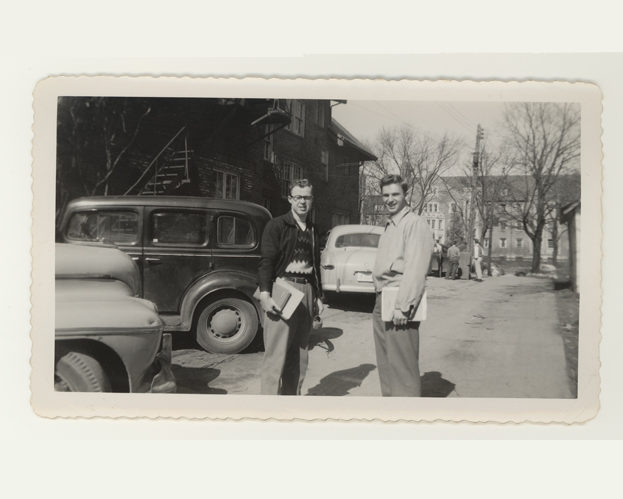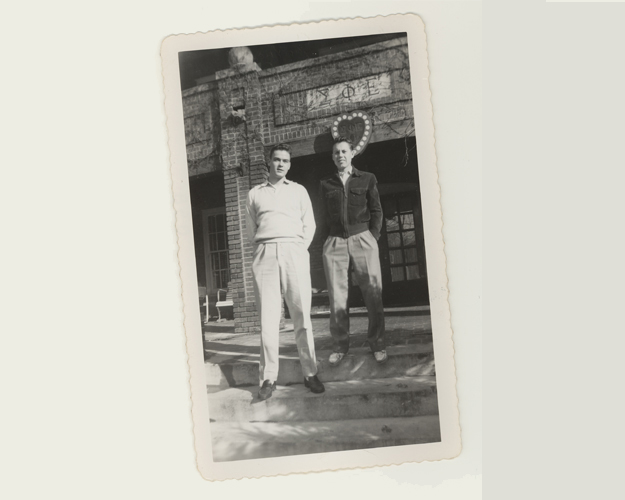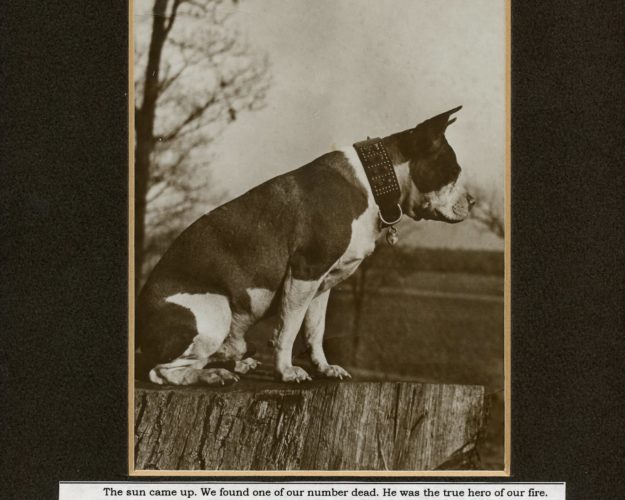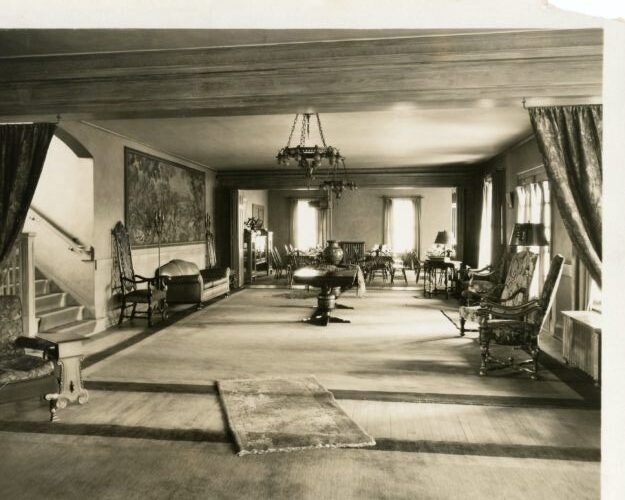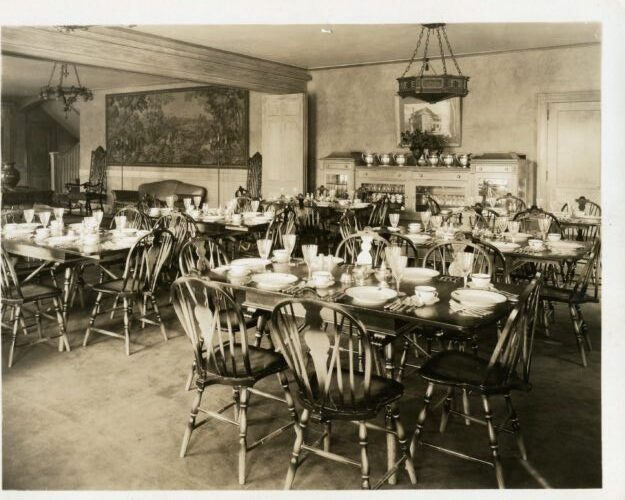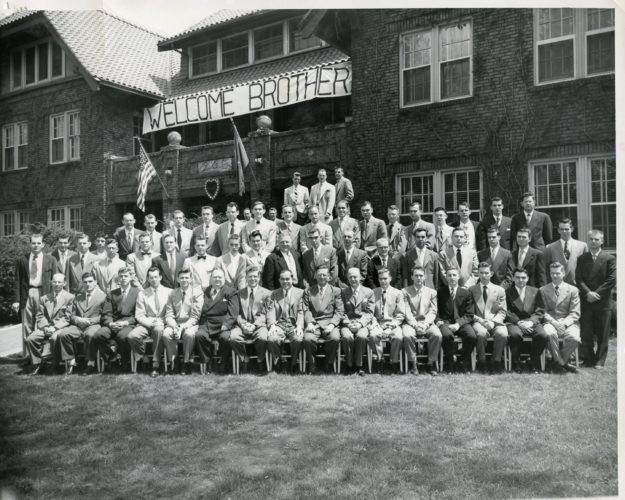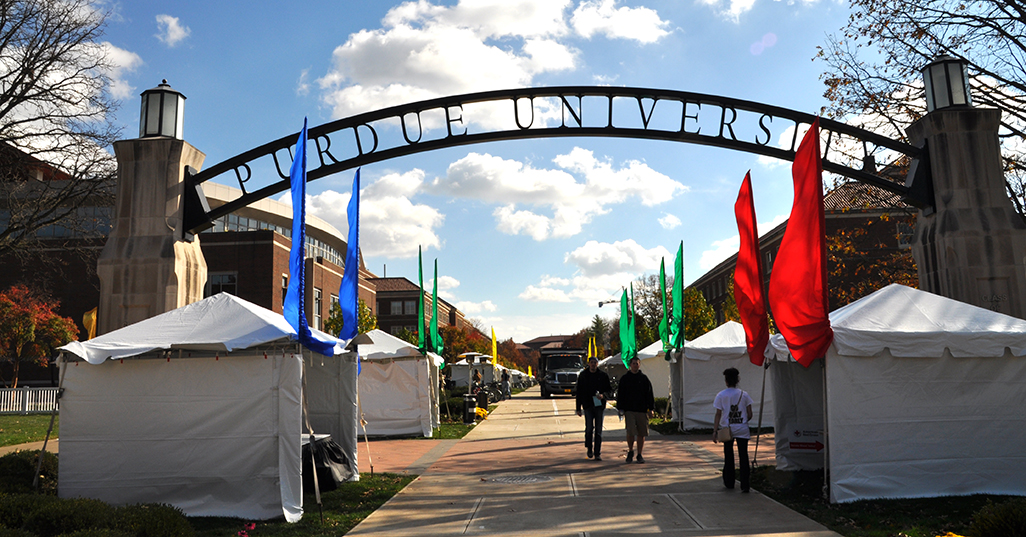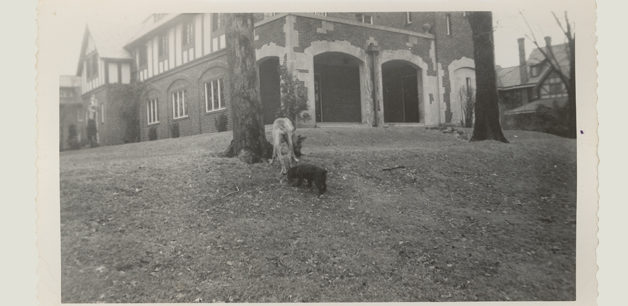Local Fraternity History
“A good name is to be chosen rather than great riches, and loving favor rather than silver and gold.” -Prov. 22.
So it is with the history of Indiana Alpha Chapter of Sigma Phi Epsilon. Obstacles, unfortunate circumstances, yes, and even a fire. From the flames of that fire we have taken as our motto: “A man may be down but he’s never out.” Our defeat only acted as a stepping stone to a greater future. As to how we secured the finest fraternity house at Purdue University, and a good name for ourselves, lies a tale.
Any organization, to be strong, must start from a small beginning and be pushed incessantly by men of might. Our history is divided into two parts: the period of struggle before the fire, and our era of victory afterwards. It reads like the myths of old.
W. L. Phillips, Grand Secretary of Sigma Phi Epsilon, recognizing the desirability of establishing a chapter at Purdue University, came to the University in the fall of 1904 with that purpose in view.
Upon investigation he found that a certain group of men had formed a boarding club and because these men were congenial and of the right sort, this organization had strengthened and gown into something more binding that the average club of that kind. NO attempt was made to form a local fraternity, nor steps taken to in any way perpetuate the organization, but the members of the club, feeling drawn together, all occupied a house on the northwest corner of Second and University Streets, and had perfected a loose organization of sorts when Mr. Phillips made their acquaintance. The members of the club were nearly all prominent in the University activities, there being among them members of literary societies, class organizations, and athletic teams. They were truly representative of the best phases of university life and Mr. Phillips at once recognized this when he met them and decided that he need look no further for a group of men to form the first Indiana Chapter of Sigma Phi Epsilon.
The club was in a receptive mood as they had felt for some time that a firmer organization, and one which would perpetuate the club, was desirable. The standing and organization of Sigma Phi Epsilon was investigated and although the fraternity was in its infancy at that time, it stood on a firm foundation its growth was healthy and its founders men of character. It was, therefore, decided to accept the invitation of the Grand Chapter and the proper petition for the formation of the chapter was presented to the faculty.
It developed, however, that this petition would not be acted upon immediately. As three of the members of the club would graduate in June of 1905, they were naturally desirous of having action taken before they left the University, the chapter was established, sub rosa, on March 15, 1905. The men who took part in this ceremony thus became charter members of the chapter. They are as follows:
W.C. Sprau, 1906
J.E. Ulrich, 1905
F.D. Ritter, 1905
H.C. Wehnert, 1906
F.S. Robbins, 1906
H.H. Rutledge, 1906
E.S. Barnum, 1905
E.J. Clerget, 1907
W.G. Duncan, 1907
R.J. Gillan, 1907
G.B. McNair, 1907
The men continued to live in the house at Second and University Streets and although the chapter was operated sub rosa, several men were pledged during the spring of 1905 and initiated on May 6. The men thus taken in were:
C.T. Brown, 1908
J.E. Poindexter, 1906
J.F. Voigt, 1908
B.K. Lucas, 1908
James Shafer, 1908
T.F. Strain, 1908
This made a well-balanced chapter and prospects for the future looked very bright.
With the start of the school year of 1905-06, it was decided to operate very quietly until the chapter was recognized by the faculty, but that fall four freshmen were pledged as follows:
J.K.G. Voard,1909
L.V. Sheridan, 1909
J.C. Lewis, 1909
B.R. Lewis, 1909
The house was too small to accommodate more than about half the chapter, but those valving outside managed to secure rooms in the neighborhood and all ate a boarding house on Waldron St. Thus the crowd was kept together and an areal fraternal spirit fostered.
It was late in the year of 1905 when the faculty decided to recognize the chapter and March 15, 1906, the anniversary of the founding of the chapter, was decided upon as the date for the formal recognition. On the evening of that day a banquet was held at the Lahr House, at which Grand Chapter and faculty representatives were present. It was a memorable occasion and one not to be forgotten by those present.
As has been intimated, the house was not large enough to accommodate the chapter, nor was it suitable in other respects, so a house at 41 Salisbury St. was rented in the spring of 1906 and occupied by the chapter in September 1906. It had been occupied by the Purdue Chapter of Beta Theta Pi and although it would no doubt be looked upon with scorn by the present generation, the members of the chapter at that time thought it very grand, and indeed it averaged up very well with other chapter houses at Purdue then.
The school year of 1906-07 was a trying one for the chapter, as we had lost several men by graduation, a number failed to return to school that fall, the chapter was new and competition for fraternity material was keen. But the men struggled through it and kept things going and September of 1907 found the affairs of the chapter in very healthy condition. That fall we had our first real house party upon the occasion of the Indiana-Purdue football game and that affair is still one to be lived over when those who were there get together.
Other social affairs followed throughout that year and the chapter affairs continued to prosper. By spring of ’08 we began to look around again for a larger, better house and finally decided to rent a large, old fashioned residence on the corner of Thornell and Salisbury Streets. This place has been occupied by other fraternities and was not just what we wanted as it stood, but the owner finally agreed to build an addition at the rear, to contain six study rooms and with other changes it was made into a very handsome and desirable fraternity house, at least to our notions at that time.
So, with many memories of the good times at 41 Salisbury, we moved into our new quarters at 102 Thornell St. The chapter was in fine condition at that time and prospered throughout that school year. The chapter was well represented in the various University activities, was gaining recognition for its progressiveness and was taking its place among the other University organizations. It had thrown off its swaddling clothes and was asserting itself.
In 1910 W. A. Hanley was elected chairman of the Junior Prom committee. In connection with the University affair the chapter held what was at that time the most elaborate House Party ever given at Purdue. We were then at our peak.
By September 1915 the old home which had been looked upon with pride back in 1908, was now in a deplorable condition. The landlord would not put in the necessary repairs because we contemplated moving at the expiration of our lease. Winter setting in, only over emphasize the need of our building; but somehow the alumni could not be brought into play. Our chapter began to decline in prestige.
Yet as every person has a turning point in their life, for the better or for the worse, so we look back to the one memorable morning, February 15, 1916, at 4 a.m., when stifled from smoke and awakened by the barking of our dog, R. M. Graeter, who was suffering from a bronchial disorder awakened and sounded the alarm. The fellows tried to get down to the second floor, but it was of no avail. The smoke blinded them, and the fire was spreading rapidly. We took to the fire escape barefooted and in pajamas only to find the snow on the ground and the temperature close to zero. Some tried to extinguish the flames, but it was of no use. The second floor was just ready to collapse when the anti-diluvian fire department of West Lafayette arrived. With their crude equipment, it took them 45 minutes to get a stream of water on the fire. By that time the fire was beyond effective control. The East Side fire department arrived in time to help pack down the smoldering cinders and sad remains of our cherished possessions. All was lost, the intense smoke prohibiting the men from getting their belongings. They make indeed a sorry plight clothed in a shirt borrowed from one fellow, a pair of pants from another, etc., until each was successfully, although not artistically, attired for classes next day.
The sun came up; we found one of our number dead. He was the hero of our fire: our dog, who had sounded the alarm became trapped in the cellar where he had sought refuge from the flames but not from the water. Today, his picture hangs in the chapter house to remind all of us and those who lived there, of the wonderful parties, the numerous pranks played upon each other and the friendships never to be broken.
Incidentally, Mrs. W.A. Hanley was visiting her parents in Lafayette and notified “Bill” in Indianapolis. By noon he and four other alumni responded nobly. Action was paramount. They gave the boys food and lodging at the Fowler Hotel and before twenty-four hours had elapsed, had pictures of the ruins and a plea for a new house mailed to every alumni of the chapter. The committee: W.A Hanley, C.H. Best, B.R. Lewis, J.K. Bovard, and K.D. Coffin, decided that now was the turning point in our career. It was determined that the building of a house was the only feasible plan by which the chapter could be held together.
To start things, a big banquet was held on March 25, 1916, in the Florentine Room at the Claypool Hotel, Indianapolis. At this banquet all the classes from the installation of the chapter to the class of 1919 were represented. The Chapter turned over to the new Association its building funds and notes along with three thousand dollars insurance. Each member giving up his right and claim to the extent of his personal loss. This Alumni Association was incorporated at that meeting under the laws of Indiana and given by the active chapter complete censorship of its finances. This feature has taken us out of department, built a new home, and is already making provisions for the future financial strength of the chapter for a period of at least fifty years. The insurance and building fund was the nucleus of our chapter. Within 15 minutes at the Indianapolis banquet the fund had swelled to twelve thousand five hundred dollars.
Our chapter was like the Belgian. We were bereft of a house and clothes. Here the loyalty of the fellows came in. We decided to stick together. Rooms were found wherever possible and a common boarding house chosen. Through the courtesy of Julius Eckhaus, a West Lafayette citizen, we were given the use of Colonial Hall for our weekly meeting. From the time of our fire till the close of our school, we added six members to our list even though our situation was grave.
Our district deputy, a man residing in West Virginia recommended the withdrawal of our charter, but due to the influence of our alumni, and our Grand Secretary “Billy” Phillips, we retained it. “It is harder to keep victory than it is to gain victory.” This we realized, so we resolutely stayed with the proposition until it was on a firm foundation.
In the fall of 1916 we came back with 18 men, rented what we called the “barn” at 1030 State Street, bought a few beds, rented cots, study tables, and some “funeral chairs,” and went in for a big year. The chapter roll increased from 18 to 33, every man living in the “barn” awaiting the construction of our new home. Brother W.W. Winslow kindly donated all the brick for the house, and Brother J.C. Lewis designed a most efficient lighting system, and a vapor steam system of heating. Difficulty after difficulty beset us but our goal was too near in sight to let down. A strike of clay workers held up construction until the chapter spent three weekends in Brazil, Indiana, loading the 110,000 bricks themselves onto flat cars, determined to finish what they had started.
Next with moving into the new home only one month away, war broke out, leaving only 12 out of 33, to move. How we survived through the war is another story itself. It is enough to say that the men used the house as their club rooms during the SATC period, and then with the signing of the armistice new life and new hope came. Every man back from the war helped to fill our chapter. We united, and hand in hand we fought with the same spirit as on Flanders fields to make that long desired name for our chapter. It took work and lots of it.
In 1919 the Grand Chapter Conclave was held in Indianapolis as the host of the Indianapolis Alumni Association and the Indiana Alpha Chapter. At the close of which, the delegates adjourned to the chapter house at West Lafayette where a dance was held in their honor. The Conclave was indeed a recognition of our efforts.
To reiterate, the chapter is now one of the most active in social, athletic activities in school. As you approach the house, you can recognize the same characteristic spirit as of old only in new clothes. The home is designed after the English Colonial type—an imposing structure of fine brick trimmed with stone, surrounded by a terraced lawn, beautiful shrubs and trees, a tennis court on the right, a driveway in the rear, attractive pillars surmounted by two large lights in front, and a winding walk which leads you into a home where a “jolly good bunch” of 43 lads welcome you to the new home of Sigma Phi Epsilon, each anxious to make that name the most in the Annals of Purdue University and say that those who went before did not labor in vain.

